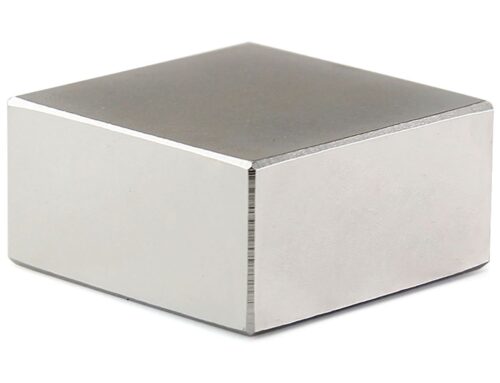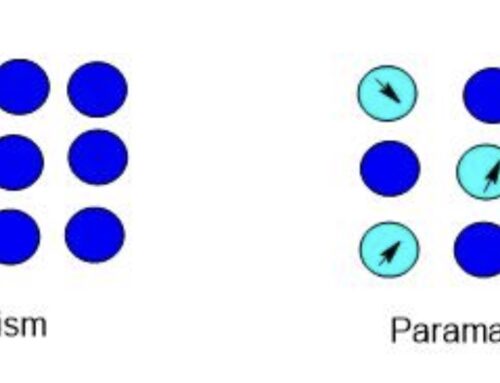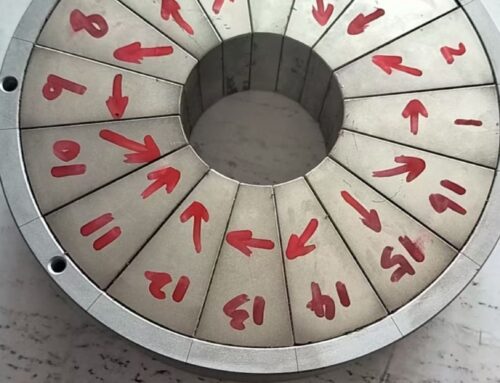What is magnetic moment?
Why do some materials become magnets while others don’t? The answer lies in a property called magnetic moment.
The magnetic moment is a vector quantity that expresses the strength and direction of a magnetic source, like an atom or a magnet.
It’s a fundamental concept in both classical and quantum magnetism, shaping everything from MRI machines to magnetic sensors.
What is the magnetic moment of a loop?
What happens when current flows in a circular wire? It becomes a tiny magnet.
The magnetic moment of a loop is defined as the product of the current and the area of the loop, pointing perpendicular to the plane of the loop.

magnetic moment by current carrying loop
Why a loop behaves like a magnet
A current-carrying loop generates a magnetic field. This magnetic field has a direction—defined by the right-hand rule—and a strength. The magnetic moment (( \vec{m} )) of the loop is given by:
[\vec{m} = I \cdot A \cdot \hat{n}]
Where:
- ( I ) is the current
- ( A ) is the area of the loop
- ( \hat{n} ) is the unit vector perpendicular to the plane
| Factor | Effect on Magnetic Moment |
|---|---|
| Larger area | Increases magnetic moment |
| Higher current | Increases magnetic moment |
| More loops | Amplifies the overall moment |
I’ve helped engineers calculate the magnetic moment for custom coils. In one project for a sensor client, increasing the loop count allowed them to detect weaker magnetic fields with higher precision.
What is the rule for magnetic moment?
Is there a way to predict the direction of a magnetic moment? Yes, it’s simple.
The right-hand rule is used to determine the direction of the magnetic moment: curl your fingers in the direction of current, and your thumb points in the direction of the moment.

right hand rule for magnetic moment–photo from electricity-magnetism
Applying the rule in real systems
In a coil or loop, the direction of the magnetic moment vector follows the right-hand rule. This helps in:
- Designing magnetic field sensors
- Understanding the torque on a coil in a magnetic field
- Determining N/S poles in magnetized structures
Here’s how the rule applies to common setups:
| Setup | Magnetic Moment Direction |
|---|---|
| Horizontal clockwise loop | Into the page |
| Horizontal counter-clockwise loop | Out of the page |
| Vertical coil | Upward or downward based on current |
When I design magnetic assemblies, I always sketch out the coil orientation and use the right-hand rule. It saves time, avoids mistakes, and ensures the field aligns with the design goal.
How can we calculate magnetic moment?
You don’t need to guess the magnetic moment—you can compute it.
The magnetic moment is calculated using ( m = N \cdot I \cdot A ), where N is the number of loops, I is the current, and A is the area of each loop.
Examples and applications
Let’s break down the formula:
[m = NIA]
- ( N ): Number of turns in the coil
- ( I ): Current through the coil
- ( A ): Area enclosed by each loop (in m²)
Example:
If a coil has 100 turns, carries 0.5 A current, and each loop has an area of 0.01 m²:
[m = 100 \cdot 0.5 \cdot 0.01 = 0.5 \text{ A·m}^2]
Practical Uses:
- Calculating the torque in electric motors
- Estimating the field strength in magnetic sensors
- Designing inductors and transformers
| Parameter | Unit | Typical Range |
|---|---|---|
| ( I ) | Amperes | 0.01 – 10 A |
| ( A ) | Square meters | 0.0001 – 0.1 m² |
| ( m ) | A·m² | 0.001 – 10 A·m² |
Clients often ask how to boost the magnetic effect without increasing current. The answer is usually: increase the loop area or number of turns.
Conclusion
The magnetic moment is a key property for understanding magnetic systems. It tells us how strong and in what direction a magnet acts, whether it’s a tiny electron or a large generator coil.





评论